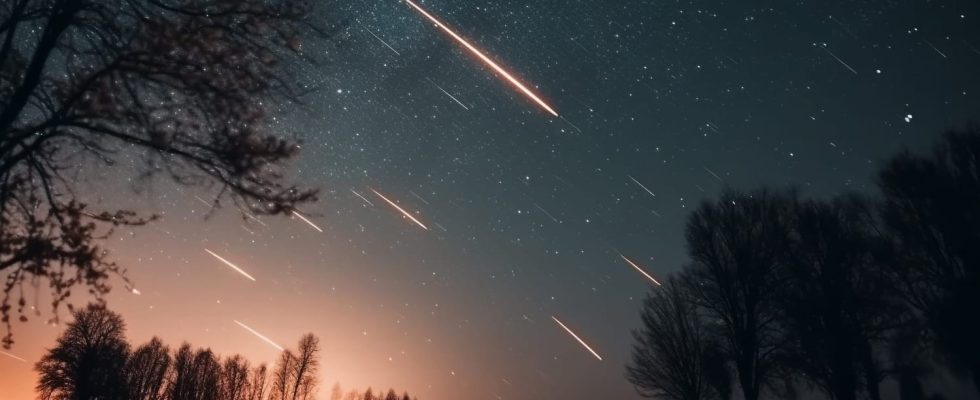The Leonid meteor shower, caused by the passage of comet 55P/Tempel-Tuttle, will reach its peak of activity between November 16 and 18. Enjoy this nocturnal spectacle visible to the naked eye thanks to our observation tips.
Although the best time to observe shooting stars is in summer, the winter period also reserves some beautiful shows for astronomy lovers. The month of November welcomes the Leonids, a shower of shooting stars which should allow you to admire around ten cars per hour provided you are patient and look up at the right time!
Tiny dust particles that travel through the atmosphere at lightning speed, star showers Shooting clouds are caused by clouds of dust left by comets circulating in the solar system. For their part, the Leonids come from the debris of comet 55P/Tempel-Tuttle. Discovered in 1862, this comet passes closest to the Sun every 33 years leaving behind it trails of dust that our planet goes through every year in mid-November.
This year, the Leonids take place from November 6 to 30, offering an observation window during these three weeks. However, their peak of activity will take place between November 16 and 18, making this period the best time to admire the show. Two observation slots should be favored to optimize your chances of seeing numerous shooting stars streaking the night sky.
The main peak of the Leonids is expected to occur during the night of November 17-18 with a peak on November 18 around 5 a.m., the perfect time to look up to the sky and make wishes. You will also be able to observe shooting stars the night before this date. The activity of the Leonids will undoubtedly be less intense but could hold some surprises for spectators with a possible peak on the night of November 16 to 17. To maximize your chances, focus on the second part of the night. There Moon will be discreet and the sky should be dark enough to offer you optimal conditions.
The radiant point, that is to say the zone from which the shooting stars seem to emerge, is located in the constellation of Leo but it is not necessary to concentrate your gaze on this place. In fact, the wider your viewing angle, the greater your chances of seeing racing cars will be.
To observe this event, you will not need any equipment since it is best admired with the naked eye! However, you often have to show a certain amount of patience before seeing your first shooting star appear. It is therefore advisable to equip yourself according to the outside temperature, to bring a hot drink and a deckchair to avoid neck pain.
